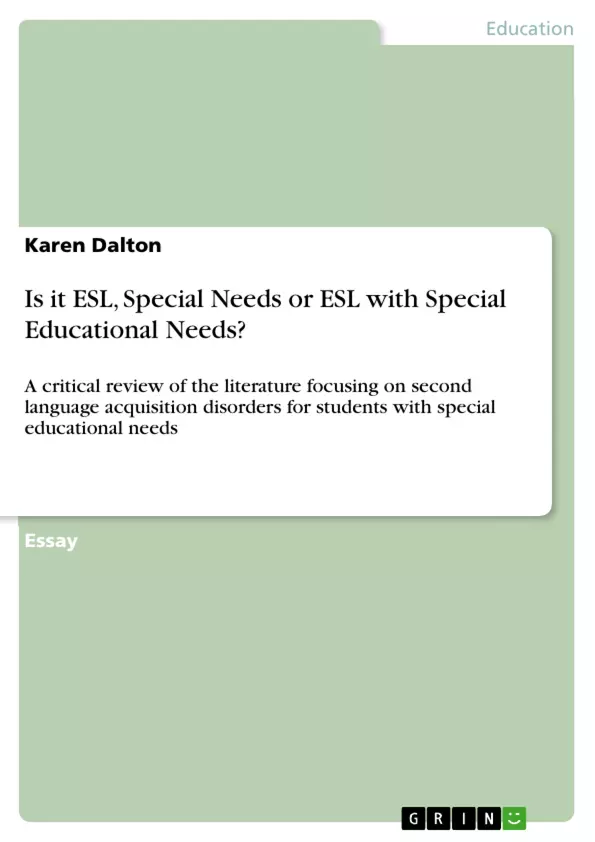Recent studies have suggested that the limited research literature that is devoted to second language acquisition disorders for students with special educational needs can be categorized into two clear polarizing views, being firstly; clinical representation of the disorders and secondly classroom interventional strategies and curriculum adaption. Neither camp seeks to acknowledge the importance of the role the other plays.
This is an extremely unfortunate situation as the theoretical literature, the most common place educators and parents seek out assistance to help the learner, is a gallimaufry of ideas, for the most part, which do not draw upon clinical research data as it is more often than not presented and worded in a way that makes it inaccessible to those without a deep knowledge of linguistics or medical terminology. Future research in this area would benefit from a more ‘user friendly’ cross-discipline approach.
Inhaltsverzeichnis (Table of Contents)
- Abstract
- Introduction
- The Impact of Second Language Acquisition on Students with Special Educational Needs
- A Global Perspective on Inclusive Education
- The Current State of Research and Theoretical Literature
- Navigating the Labyrinth of Research and Theory
Zielsetzung und Themenschwerpunkte (Objectives and Key Themes)
This critical review of the literature aims to explore the complexities of second language acquisition disorders in students with special educational needs. It seeks to shed light on the current state of research and the theoretical frameworks surrounding this critical issue.
- The interplay between second language acquisition and special educational needs
- The challenges of identifying and supporting students with second language acquisition disorders
- The need for a more inclusive and user-friendly approach to research and practice
- The impact of global migration on education systems and the need for effective interventions
- The role of theoretical and clinical research in informing educational practices
Zusammenfassung der Kapitel (Chapter Summaries)
- The abstract introduces the topic of second language acquisition disorders in students with special educational needs, highlighting the polarization between clinical representation and classroom intervention.
- The introduction delves into the global context of special educational needs, drawing attention to the significant percentage of the population with disabilities and the diverse needs of these students.
- This chapter explores the challenges faced by mainstream classroom teachers in identifying second language acquisition disorders within special need students. It highlights the concept of "unexpectedness" and the need for educators to distinguish between true learning disabilities and other reasons for academic struggles.
- This chapter examines the global context of inclusive education and the increasing number of displaced individuals, particularly children, facing language acquisition challenges in new environments.
- This chapter delves into the current state of research and theoretical literature surrounding second language acquisition disorders. It explores the limitations of the existing research and the need for a more comprehensive and accessible approach.
- This chapter critically analyzes the research literature, highlighting the challenges educators face when navigating the complexities of medical terminology and the often contradictory perspectives presented.
Schlüsselwörter (Keywords)
The main keywords and focus topics of this text include: second language acquisition, special educational needs, language disorders, inclusive education, global migration, research literature, theoretical frameworks, clinical representation, classroom intervention, disability, learning disabilities, and user-friendly approaches.
- Citation du texte
- Karen Dalton (Auteur), 2016, Is it ESL, Special Needs or ESL with Special Educational Needs?, Munich, GRIN Verlag, https://www.grin.com/document/438705



